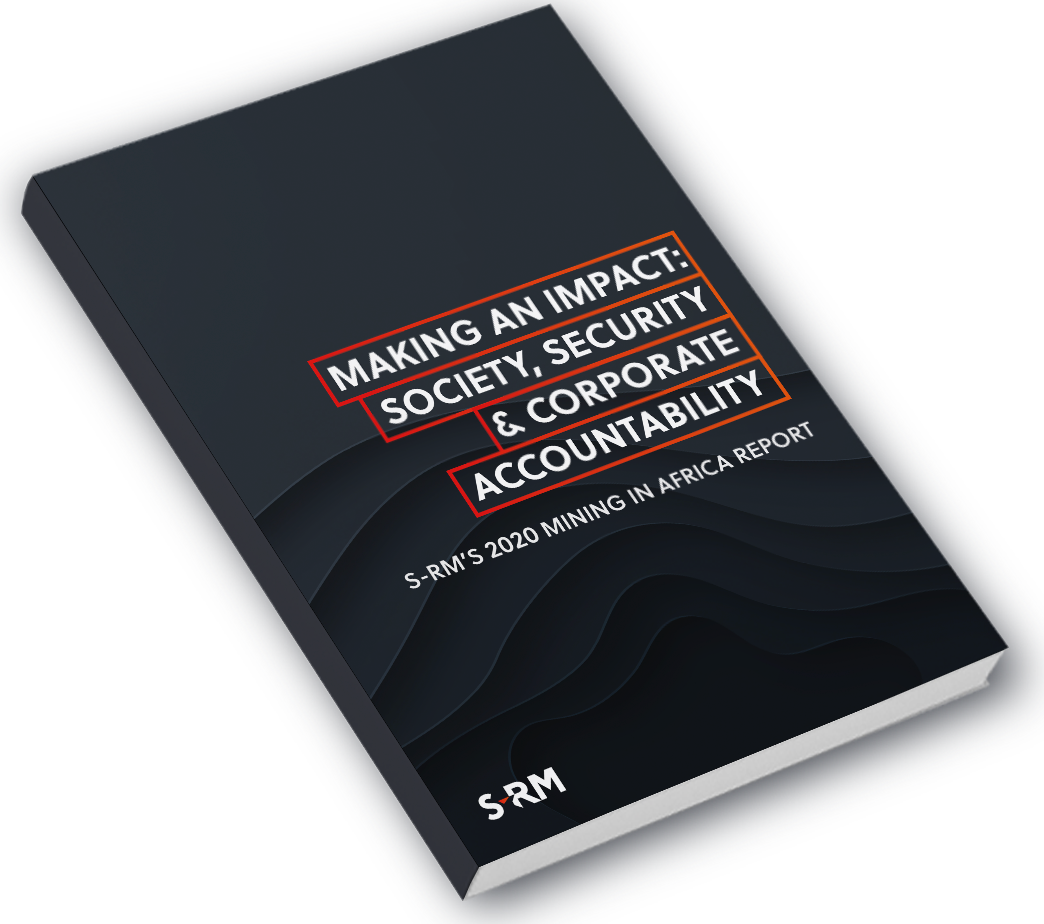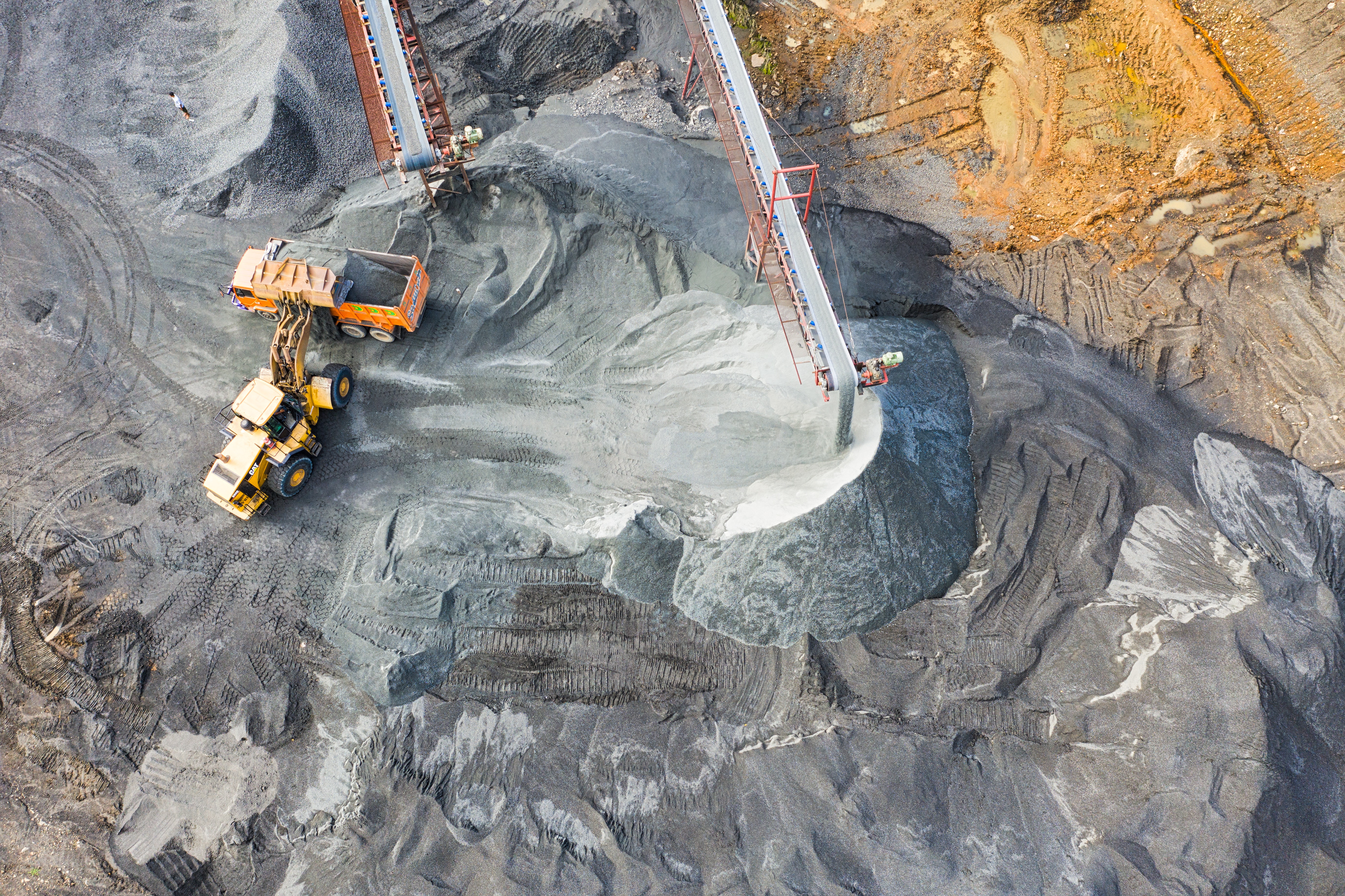Mining companies have historically ranked poorly on Environmental, Social and Governance indicators. Despite being a capital- and carbon-intensive industry, ESG concerns have either simply not been high on the priority list, especially for juniors, or good practice has existed in pockets of a company, but has not been knitted together into a cohesive policy, or had a board really driving the initiative. But change is underway. Propelled by investor demand, and supported by a changing global economy, there is now a widespread recognition in the industry that ESG has to be a core component of any mining company’s strategy and policies.
Asset managers and institutional investors are integrating ESG issues into their investment criteria for the sector, highlighting a growing alignment of values and an understanding of how ESG issues impact on financial returns. The announcement of the dismissal of three executives from Rio Tinto in September 2020 following the miner’s destruction of ancient Aboriginal heritage sites, despite presiding over a period of record shareholder returns, shows that shareholders are also increasingly holding boards to account. Healthy returns are no longer enough. The demand for ESG policies is not just taking place in response to PR calamities caused by environmental disasters or corruption exposés, but is increasingly forming part of day-to-day work practices. For example, according to one listed mining firm, it was consistent shareholder pressure, as well as moves by its competitors, that compelled the firm to produce an ESG annex to its annual report for the first time in 2020.
According to a survey in White and Case’s Mining and Metals Report 2021, 45 percent of mining companies they spoke with described ESG as the biggest risk the sector faces this year. The risks of not taking ESG seriously are uniquely high for the mining sector. The reputational impact and costs resulting from environmental, social and governance risks pose a threat to business continuity, especially given growing calls for transparency and more effective scrutiny from investors, stakeholders, governments, pressure groups and consumers. In addition, as countries across the world pursue decarbonisation agendas, it is the mining industry that many will be looking to, to dig up the resources governments and businesses need to meet their targets, whilst also scrutinising its practices like never before.
A comprehensive and well-communicated ESG strategy can in itself add value by improving reputation and business resilience, as well as attracting investors. Speaking with S-RM, a leading institutional investor said they now expect to see clear ESG policies and evidence of commitment and progress before offering equity financing. Generational shifts in the workplace are also seeing ESG prioritised by an evolving workforce. According to one listed mining company, a strong ESG policy has now become an imperative, helping it to achieve a premium listing and attract higher quality employees and partners.
Still, some mining companies, and especially the juniors and service providers, are paying lip service, often driven by competing cost pressures. In other cases, ABC policies or environmental audits are in place, but just not woven into a coherent strategy. As one London-based mining company told us: ‘we already do many of the ESG elements, but with no process or policy written down or codified we are falling behind our competitors’.
Some ESG legislation is in place, particularly around corruption and modern slavery, but government action is still lagging behind investor pressure. For the foreseeable future, it is likely to be this investment community that continues to drive real ESG change in the mining industry, both in terms of good practice in the businesses and pushing industry bodies and governments towards binding codes and legislation.
SEEKING DIRECTION
The mining sector is being both pushed and pulled towards ESG, but companies are still struggling with the lack of clear guidance or rules on ESG policy and implementation, and few laws upon which to hang a framework.
There has been some progress from industry bodies, market leaders and multilateral groups to introduce codes and establish minimum standards or disclosures. The London Stock Exchange, for example, led the charge, issuing its first guidance on the integration of ESG into investor reporting and communication as early as 2017. The International Council on Mining and Metals’ 10 Sustainable Development Principles require site-level validation and transparent disclosures, and these are closely aligned with the World Gold Council’s own Responsible Gold Mining Principles, its new ESG framework for consumers, investors and the downstream gold supply chain.
On 1 January this year, the EU’s new Conflict Mineral Regulation also came into force, requiring importers to follow a five-step due diligence framework built by the OECD to ensure tin, tantalum, tungsten and gold are produced in a manner that does not fund conflict.
However, on the whole, it is still investors pushing mining companies towards better ESG standards, rather than legislators and regulators compelling them. The EU Conflict Mineral Regulation, for example, took nearly four years to come into force after the text of the law was agreed.
It is some members of the investor community, particularly pension funds, who are really piling the pressure onto governments to create the legislation that enables them to allocate capital sustainably. Until that happens, or investors are able to coalesce around a core range of ESG frameworks, a lack of clear and tangible guidance on what ‘good’ ESG looks like will continue to hamper the industry’s ability to pursue coherent ESG standards.
GETTING IT RIGHT: THE IMPORTANCE OF CORPORATE GOVERNANCE
The first step in getting ESG right is to get corporate governance right. A dedicated individual, or team, needs to own this responsibility, working with key people across the company to identify the most material issues for the mineral and the business. They need to decide which ESG metrics to measure themselves by, apply clear reporting standards to cover all their assets, and agree on their level of disclosure.
Too often, the ESG role is double-hatted. An emerging market investor we spoke with highlighted their concern that the ESG responsibility often sits with marketing and investor relations teams, or with an inexperienced but idealistic employee. This can compromise the objectives of an ESG strategy and dilute its effectiveness.
To be taken seriously as an ESG company, responsibility should be designated to a senior executive, often at board level, who can reach across the business, including to local community stakeholders, for information and solutions, build a strategy and push through challenging recommendations. This strategy needs clear timelines, objectives and metrics. Whether an annual stabilisation test on all tailings dams within their portfolio, monthly reporting of the number of staff disciplined for non-compliance with anti-corruption policies, or an annual board-level review of the strategy and risks, there needs to be a chain of responsibility and accountability. The next step in creating an effective ESG strategy is to understand the specific environmental, social and governance risks and the exposure of each asset, its producing mineral and the mining company itself.

ENVIRONMENTAL RISKS
Mining companies are uniquely exposed to environmental risks – historically they have proved some of the most disastrous in terms of safety, direct financial cost, business disruption and reputational impact. For example, the collapse of the tailings dam in Brumadinho, Brazil in January 2019 wiped nearly USD 19 billion off the value of Vale, the operator of the adjacent mine, in the few days after the collapse. This disaster alone has been a game-changer in terms of mining companies now being forced by investors, governments and pressure groups to re-evaluate the risks of their exposure to tailings dams.
As well as addressing site-specific environmental issues, such as hazardous waste disposal, reduction of fresh water usage and local ecosystem management, mining companies are also responding to the wider energy transition agenda. This is driven not just by ESG stakeholders and targets around the reduction of carbon emissions, but also by commercial imperative.
Mining companies are having to fall in line with national and international commitments on reaching net-zero at various points within the next 30 years. This is unsurprising given, according to recent analysis by McKinsey and Co., the mining industry alone accounts for 4-7 percent of global greenhouse gas emissions, and another 28 percent through indirect emissions occurring along the value chain. Some mining companies have already set themselves explicit net-zero targets, which includes decisions on carbon offset and collecting and disclosing far more data on their emissions and energy consumption than ever before.
The decarbonisation agenda also presents a unique opportunity for the mining industry to play an integral part in the renewable energy revolution. Driven by investor asset allocations and government policy agendas, mining companies are well placed to form part of this global environmental shift. Renewable energy, for example, can consume 10 times as much primary material as fossil fuels, and critical minerals form an important part of the supply chain for electric vehicles. However, if the mining industry is to form part of this global solution, it will need to make sure that it has good practice in its own backyard, as scrutiny will be even greater.
SOCIAL RISKS
Historically, social risks have been some of the most neglected issues in the mining industry. Yet, a leading emerging market focused investor emphasised that to their fund, these are some of the most salient risks. Particularly in jurisdictions where government oversight is lacking or non-existent, issues frequently occur around modern slavery, underage workers, human rights and working conditions. A robust ESG programme focused on the social risks of mining, where companies run the risk of falling foul of the most legislated part of ESG, can have a meaningful and positive impact on workers and communities. It also contributes to a more responsible image of the mining sector, to shareholders, investors and a more socially-conscious public.
Although these social risks are universal to mining companies, country staff need to be involved in the ESG process, especially in higher-risk jurisdictions where community norms and legislation can vary. For example, a robust ESG process would register the dates of birth of every employee, whether formal or temporary labour, and the nature of their work, to ensure that children are not engaged in hazardous work.
Diversity and inclusion is one of the metrics a mining company can very easily be judged on. A recent report on Board Diversity in AIM and FTSE Small Cap companies found that many AIM companies, where so many mining juniors are listed, have still not committed to specific reporting on this issue, with 42 percent of the top 50 AIM companies still having no reference to any policy on diversity on their website or in their Annual Report. Even more startingly, the report found that gender diversity on the boards of the AIM UK 50 companies, at 15 percent women directors, was only slightly better than the FTSE 350 a decade ago. There is clearly far to go on these metrics, before even drilling down into diversity within the executive management and wider workforce.
GOVERNANCE RISKS
The ‘G’ of the ESG process has historically existed within the compliance function of a mining company. However, this can pigeonhole governance issues and fails to account for the broad span of governance reforms that companies could and should be implementing.
The global focus on ESG is now encouraging mining firms to take a wider view of governance risks, including tax strategy, anti-bribery and corruption, political donations and lobbying, and business resilience. The advent of GDPR and new cyber threats are also forcing companies to consider data and cyber security. Unfortunately, for many mining firms, proper cybersecurity measures are still often only brought in after the company experiences a breach or loss. Similarly, joint ventures and partnerships with state-owned firms, or operations in countries with a high level of state control, such as China, leaves firms vulnerable to the theft of intellectual property unless governance is properly considered under a clear ESG policy.
Mining companies also need to make sure they are linking their plans for governance reforms up with the social environments in which they are operating. For example, mining companies will often make payments to community projects, yet there is a trend for these to ultimately end up in the pockets of local management, resulting in a financial loss, as well as non-compliance with community engagement requirements and a dissatisfied local community. For it to work effectively, ESG must be adapted to these local situations and the three pillars must be considered together.
TRANSPARENCY AND TECHNOLOGY in SUPPLY CHAINS
Investors are not the only parties expecting mining firms to re-think their approach to ESG risks. A growing movement of shareholder- and consumer-led demand for ethical sourcing and transparent supply chains has seen a number of retailers and manufacturers, for example, reinvigorate their supply chain due diligence efforts, with a focus on ESG.
Calls for transparency in particular have also emanated from regulatory bodies and international organisations. These include the United Nations Global Compact, currently the world’s largest corporate responsibility initiative, as well as the Equator Principles, a widely-adopted risk management framework to assist financial institutions in the evaluation of social risks for project finance. Further initiatives, such as the Voluntary Principles on Security and Human Rights, which was penned by a variety of stakeholders in 2000, have further drilled down into the application of such guidelines to the extractives sector specifically. Collectively, these guidelines advocate for greater transparency and accountability in relation to a range of social concerns, including diversity and inclusion and the protection of human rights in the course of a business or its suppliers’ operations.

CASE IN POINT: CHILD LABOUR AND COBALT MINING IN THE DRCA landmark class action lawsuit, filed against Apple, Google, Dell, Microsoft and Tesla in December 2019, has brought ESG concerns and businesses’ responsibility to observe them into sharp focus. The case was filed in the US by an international human rights organisation on behalf of parents from the Democratic Republic of Congo (DRC) whose children had been killed or injured while mining for cobalt. The lawsuit alleges that the tech companies knowingly benefitted from and were complicit in the deaths and injuries of these children, who worked on mines that are part of the companies’ supply chains. Key to this claim is the argument that all the tech companies have the authority and resources to supervise and regulate their cobalt supply chains and that their failure to do so amounts to complicity. Several of the defendant companies and named DRC miners have issued responses emphasising their commitment to protecting human rights and the rigour of their supply chain management systems. The companies have called for the case to be dismissed, arguing that through the mixing of cobalt from various sources, they cannot trace the metal they purchased to specific mines and therefore the plaintiffs’ injuries are not fairly traceable to the companies’ conduct. The decision currently sits with a federal court in Washington, and the outcome will be watched closely, with the potential to set a legal precedent for the accountability businesses face in relation to their social impact. |
Demands for transparent supply chains are also being facilitated by emerging technologies. The World Economic Forum, for example, predicts that the Fourth Industrial Revolution (4IR) will ‘take supply chain visibility, coordination and performance to new levels’. Similarly, blockchain technology is set to enable supply chain traceability for consumers wishing to interrogate product histories. In fact, the International Data Corporation (IDC) estimates that manufacturing industries comprise around a quarter of global spending on blockchain services in order to identify asset provenance and build digital trust through collaborative supply chains, and enabling consumers to access product histories. The COVID-19 pandemic has further exposed inefficient and outdated processes, causing businesses to re-evaluate core processes and accelerate interest in this type of digital solution for supply chains into 2021.
ALIGNING OPERATIONAL IMPERATIVES WITH ESG DEMANDS
ESG is no longer a ‘nice to have’ or ‘add-on’ to a mining company’s risk management or due diligence processes. Investor allocations, growing scrutiny and anticipated regulatory imperatives mean that any business operating in the mining industry needs to align its strategic and operational imperatives with ESG demands. Once the right team is in place, the first step is to build an ESG strategy, in consultation with local stakeholders who know the assets well, senior leadership, and external expertise who understand specific environmental, social and governance risks. Lawyers also have a key role to play in any ESG team, often as custodians of pre-existing policies, holding relationships with third parties providing ESG due diligence or advisory services, and preparing for regulations and legislation in the pipeline. Most importantly, ESG should not sit in company silos.
Until legislation is more wide-ranging and comprehensive, and investors are aligned on the key ESG frameworks, it will be each company’s own ESG strategy that will determine which standards to adhere to, establish benchmarks and enable common rules to be applied across assets. The scale and scope of these operations will be different for everyone. Neither investors nor mining companies want a one-size-fits-all approach. Specific assets, minerals and companies need specific and appropriate applications of the ESG principles.
Independent advisors have a role here, whether being co-opted onto a company’s ESG committee to offer strategic guidance, physically assessing assets to feed into an effective remediation and monitoring plan, or providing ESG due diligence on existing portfolios or potential investments. This close co-operation between advisor and corporate will ensure that good practice is embedded and a company’s ESG strategy stays aligned with both its corporate strategy and evolving ESG requirements.




 Email Natalie
Email Natalie





 @SRMInform
@SRMInform
 S-RM
S-RM
 hello@s-rminform.com
hello@s-rminform.com

